Need BALANCE?
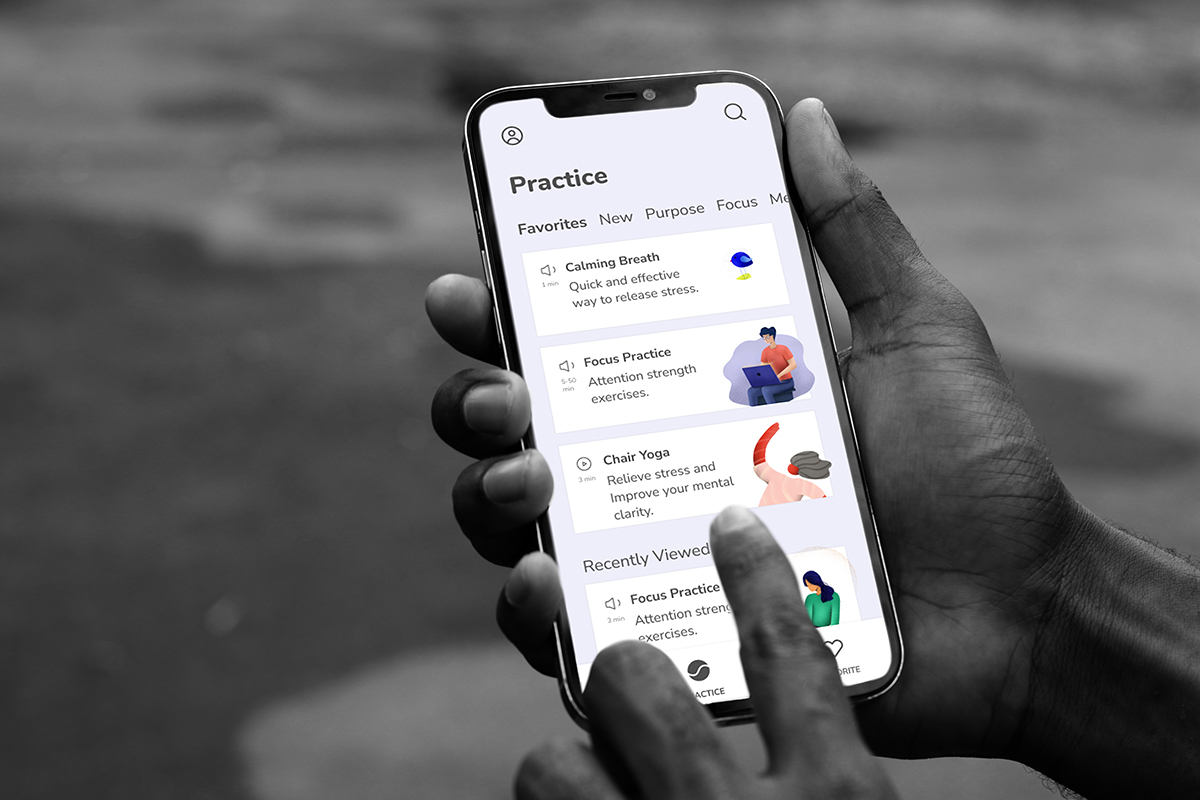
My Role
Balance app was a concept project as part of CareerFoundry UX Bootcamp. My part was to Research, Ideate, Design, and conduct User Testing following the design thinking principles. I have completed this journey in just under six months.
My Process
Competitive Analysis - User Research and Analysis - Content Auditing - Information Architecture - Card sorting - Wireframes - Prototyping - Remote Usability Testing - Preference testing - Design Language System
My Tools
Adobe Illustrator - Photoshop - Figma
PROBLEM STATEMENT
Busy professionals who seek to improve their work-life balance need a simple platform to disconnect from their momentary stresses. Instead, they can engage in quick mindful exercise to regain a healthy mindset because work-life balance promotes the feeling of well.
RESEARCH & ANALYSIS
I collected quantitative data (using Google Forms) surveying 37 participants to better understand my audience. My initial questions were as basic as "What does work-life balance mean to you?" Then, I dug deeper into how often, the whys, and why not.
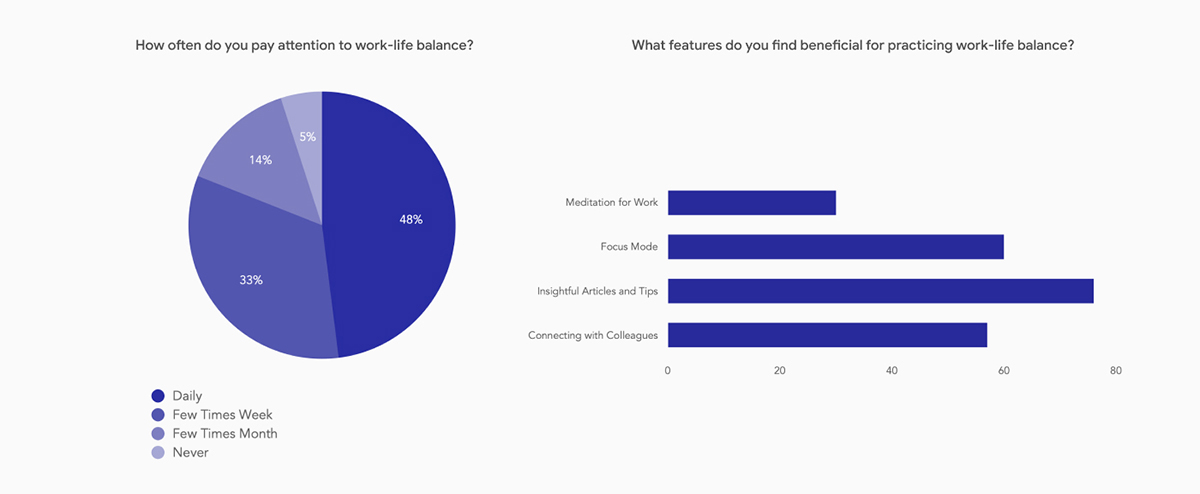
84% participants would sign up for a well-being platform provided by their employer.
INTERVIEWS & AFFINITY MAPPING
I also sat down with three people for an in-depth qualitative interview listening to their experience, frustrations, and joys around work-life balance and how they use well-being platforms. Below is a section from my affinity mapping using information gathered during the interviews.
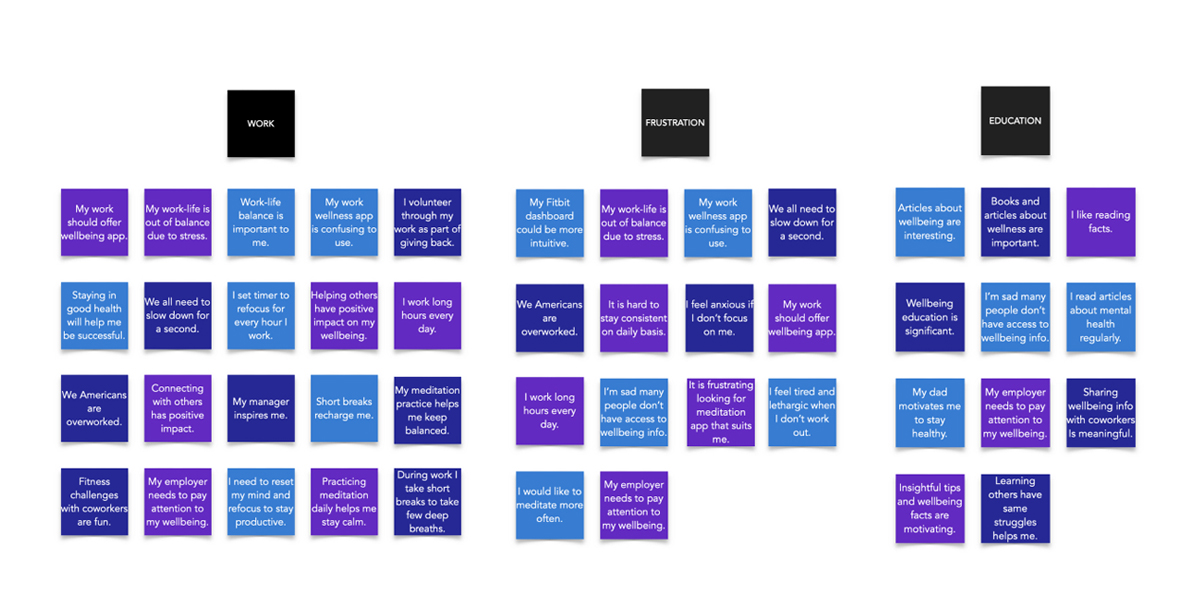
RESEARCH SUMMARY
- Periodic and quick mindful breaks through the workday help people recharge and stay productive.
- Education around well-being motivates and empowers people.
- Employers have a responsibility to provide well-being means to their employees.
- Meaningful connection with coworkers is essential to work-life balance.
PERSONA & JOURNEY
Based on my quantitative and qualitative research, I have created two personas. These personas are profiles that emerged from my survey and interview findings.
Meet Zoe as she navigates through her personal journey setting herself up for a balanced day at work.
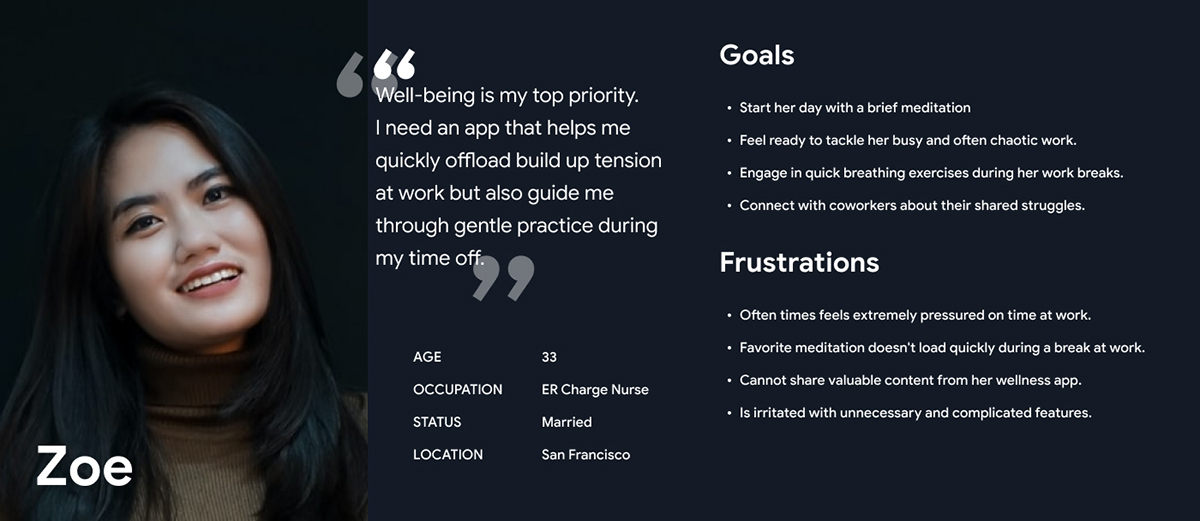
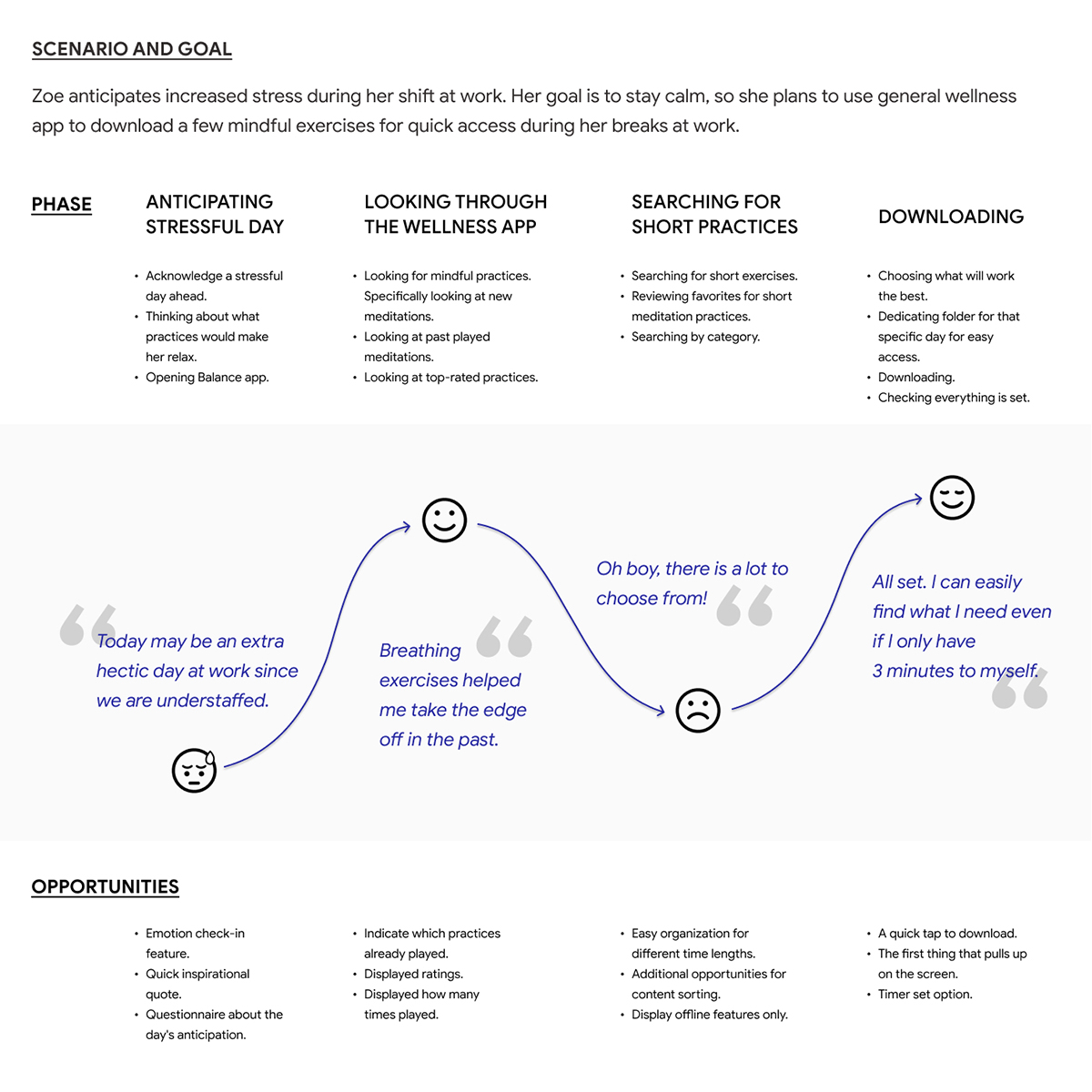
Meet Rob who's goal is to share his new knowledge with his peers.
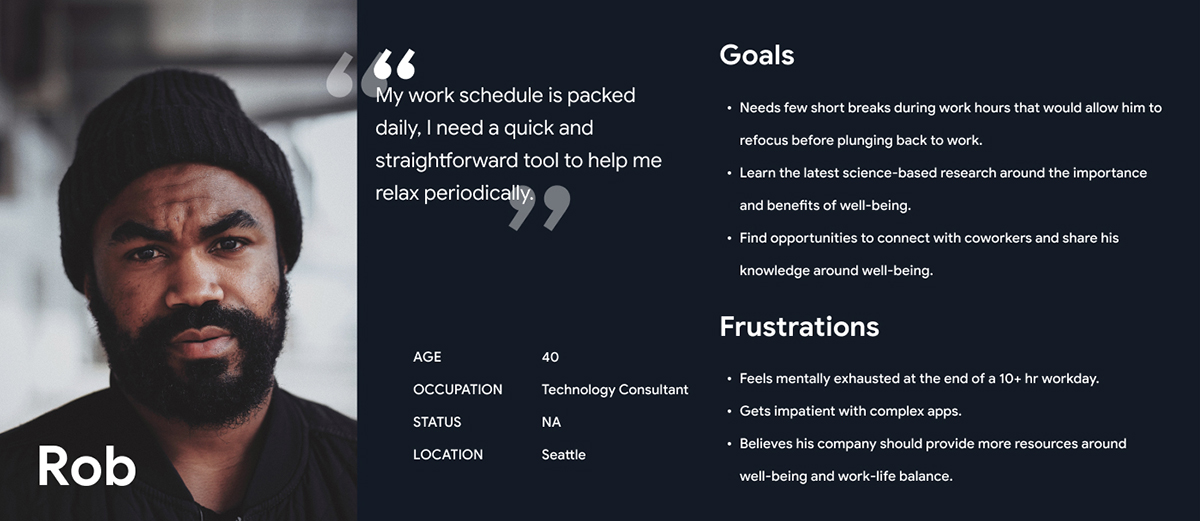
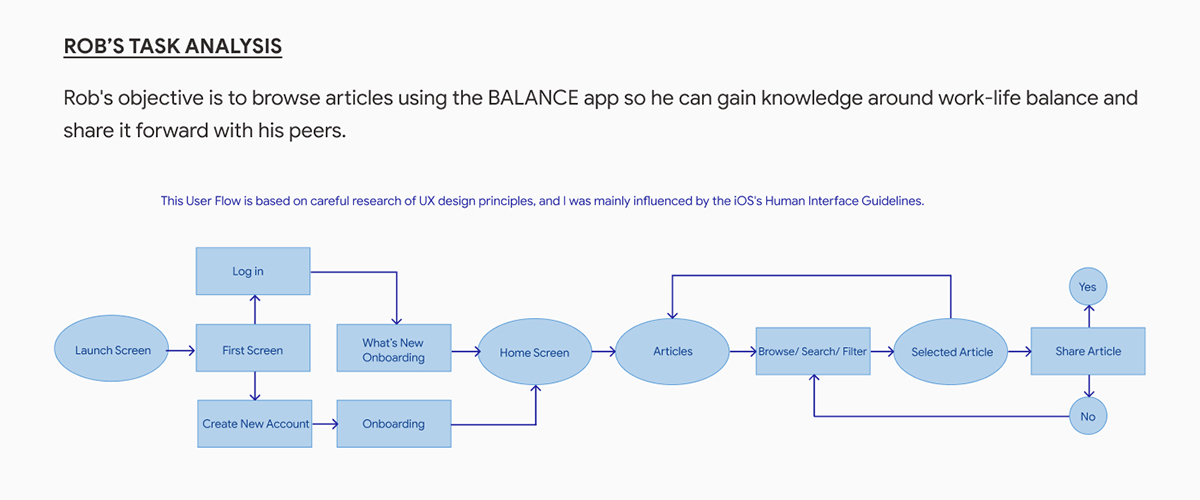
PROTOTYPING
Once I understood my audience, I started working on BALANCE's iterative cycle of designing and testing.
Let me show you an evolution of my prototypes for Rob's task of sharing content below. For a more interactive experience and additional features, see the clickable prototype.
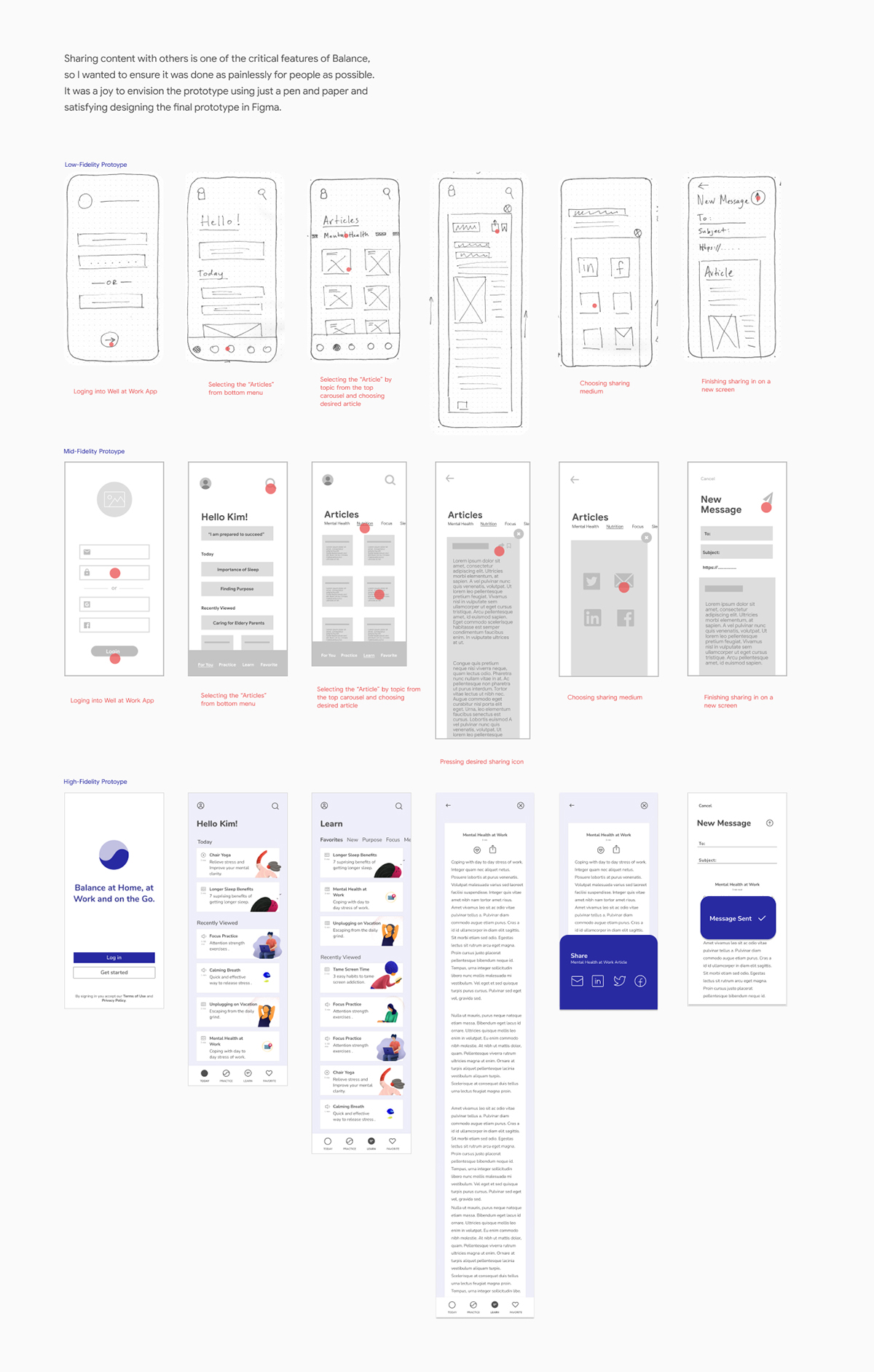
FINAL MOCKUPS
For BALANCE to be launched quickly, I decided to follow a Lean Design Methodology and narrowed the app's finish to Minimum Viable Product. In future iterations, I plan to add features such as tracking one's work-life balance progress and connecting with colleagues.
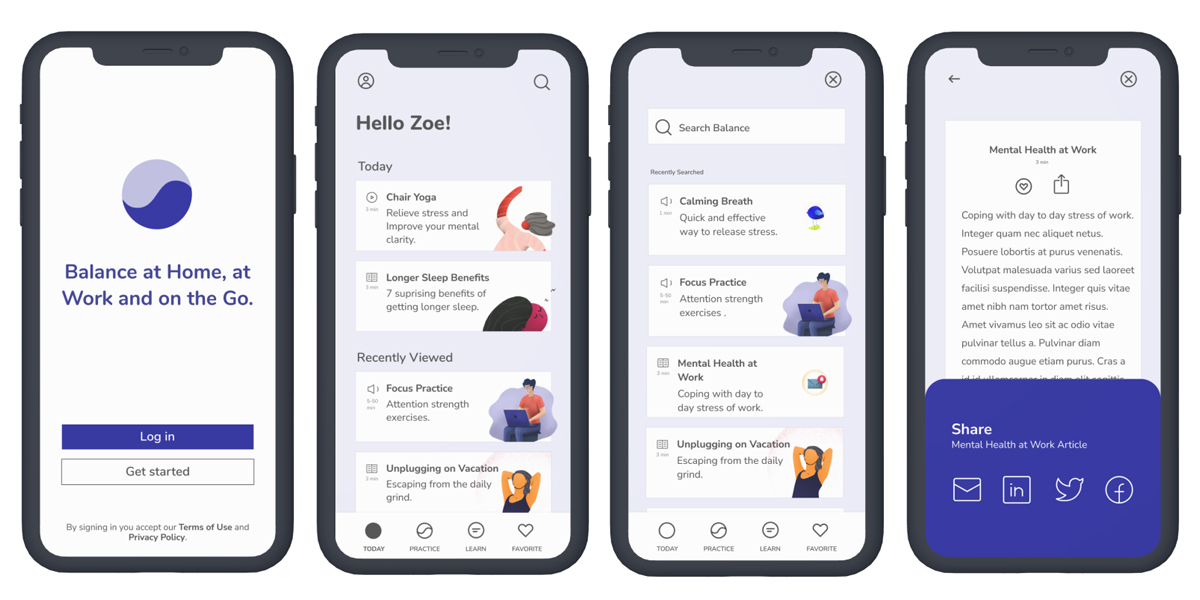
REFLECTIONS
- I enjoy working with people and love learning about people's needs and pain points. Being present, listening carefully, and practicing empathy skills was the most rewarding part. That said, staying subjective and not projecting my biases during the research phase was also somewhat challenging.
- It turns out that I didn't think of all the right questions right off the bat during my first round of surveying, and I realized it is ok to clarify results with additional surveys to achieve a deeper understanding of my target audience.
- Receiving feedback from my peers, tutor, and mentors was the most energizing aspect. Going back to my process and adjusting my designs according to their valuable feedback helped me grow into a better designer. Yet, I still have a lot to learn, and that just excites me.
Credits and Shout out to:
Tony Sebastian @tonyzebastian for Figma Abstract illustrations. Inge Malan @Inge for Figma Sunrise Design System.
And my CareerFoundry support team, my tutor Vijit Bhati and my mentors Kate Bagoy and Becca Kroese for their continuous feedback and encouragement to keep pushing this journey forward.